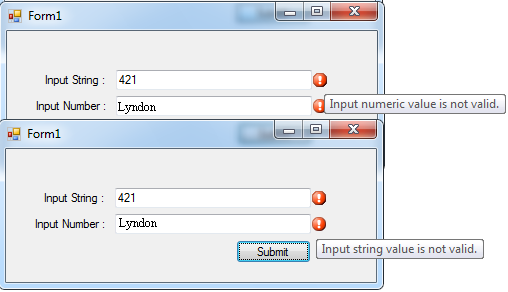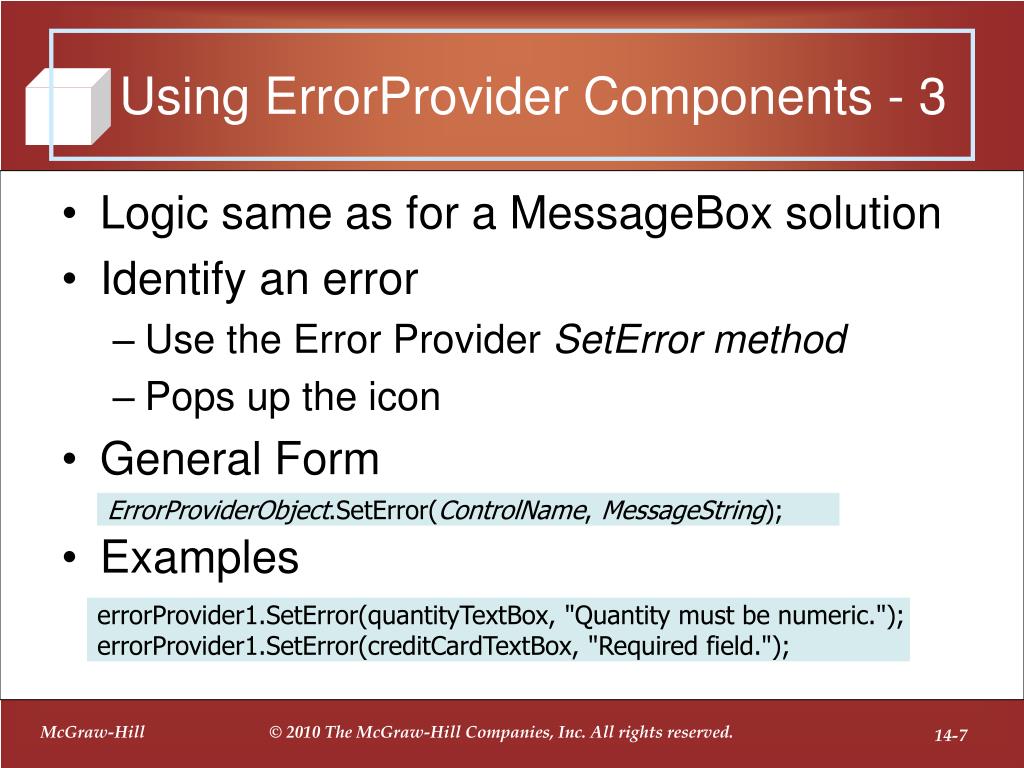
When you load the root collection BrandColl, you must load all Brand objects. ModelColl is the child of Brand and you specify it in TypeName. In the Child Collection Properties of Brand, you specify all its children. These properties show up in the Csla Object Info pane under 04. Later on, we will talk about properties of Brand as a child. The next section is about Child Collection Properties, meaning the children of Brand, i.e., ModelColl. On the other hand, Brand is also the parent of ModelColl. Object type transformation, we will transform this object into a DynamicRoot.ĮditableSwitchable objects may sometimes be root and sometimes child. Brandīrand is an EditableSwitchable object. Note all CreateOptions and DeleteOptions are False or blank.įig.
#Csla errorprovider code#
Although the Stored Procedure isn't generated ( Procedure is set to False), the generated code will use an Stored Procedure so you must specify its name. In order to fetch the collection, you must define a Criteria. So, we will start by the criteria section. Object type transformation, we will transform this object into a DynamicRootList.Ī collection doesn't have value properties as those are defined in the objects the collection is made of. The "not to be used" name of DynamicRootList is EditableRootList Base and not EditableRootList different names, different kinds of object. It's an EditableRootCollection (that's the CslaGen name for EditableRootList). Filtering properties could be the object's name, some date, or date range, etc.īrandColl is a collection of Brand objects. FilteredCriteria - It's used to get a partial collection.Usually, it has no properties and the object is created with default values. CriteriaNew - It's used only to create objects, and it doesn't exist on collections.child objects - object ID and row version.root objects - object ID and row version.

They use the same Stored Procedure that will be generated by FilteredCriteria. In this case, a FilteredCriteria will be used to allow filtering. For root collections, it's normal to have no properties at all, so it will fetch all objects in the collection.
#Csla errorprovider update#
For editable objects, it's also used to update and delete.
#Csla errorprovider how to#
This project also shows how to implement auto save on the detail list.

If you use DynamicRootList for the master list, auto save is a standard feature.

This project shows how to have a master/detail DataGridView using the CSLA DynamicRootList (or EditableRootListBase) as the master list object.


 0 kommentar(er)
0 kommentar(er)
